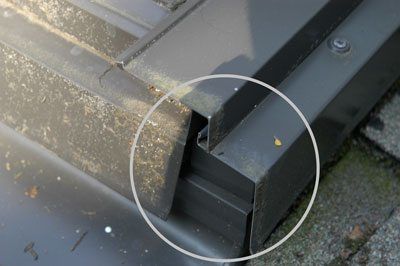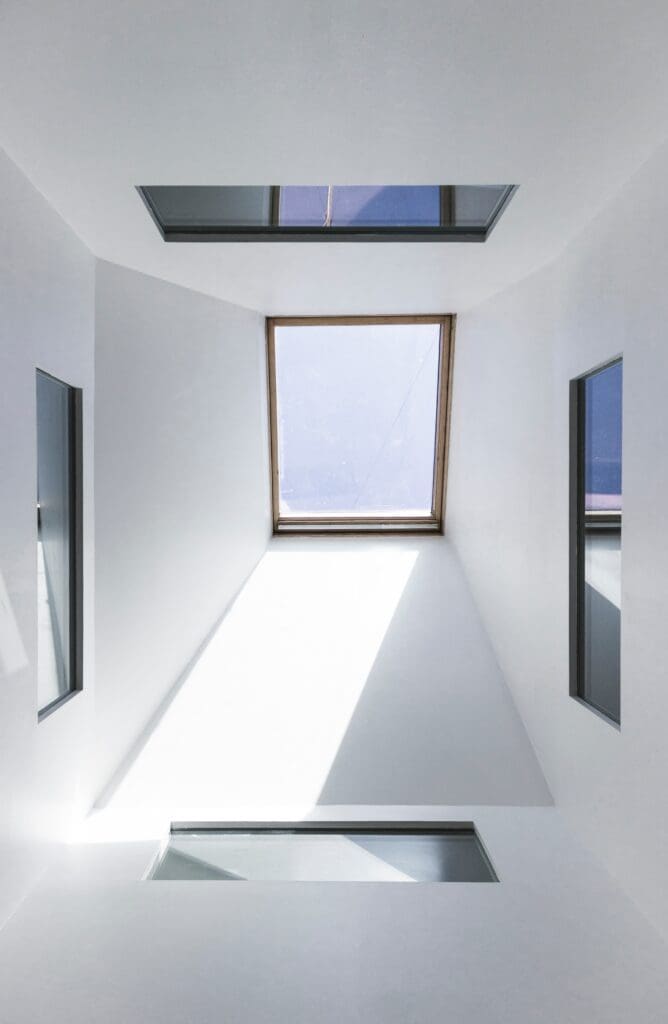Skylights Information

How can allowing warm natural light into a building space not be a great addition to a building space? Well, while tenants will typically welcome natural light, they are not always so enthusiastic about letting in other elements, such as water. Any building owner or property manager who has dealt with skylights before will tell you that skylights and water leaks go hand-in-hand.
Let’s take a look at all the ways that acrylic skylights, plexiglass skylights, and glass skylights can develop issues. If you’d like to have yours checked out or get some preventative maintenance done, simply contact NIR Roof Care, Inc. We serve Chicagoland, Joliet, Madison, Milwaukee, and Beloit with exceptional commercial roof services!
Why Do My Skylights Leak?
The truth is, there are a lot of pieces that make up a skylight and leave it vulnerable to water migration. Just like everything else up on the roof, it expands and contracts throughout the various thermal cycles. As a result, the lenses cracks, the skylight sealant deteriorates, and other materials break down, creating perfect spaces for water to make its way in. All of these dangers hold regardless of whether you have a plexiglass skylight, an acrylic skylight, or glass. Other reasons your skylight may leak include improper installation.
What Kind of Skylights Do I Have?
There are two (2) main types of skylights: deck-mounted and curb-mounted. A deck mounted skylight attaches directly to the roof deck. Deck mounted skylights combine a wood frame, insulated glass panes, and aluminum cladding. A flashing kit is used to cover the seam and make the installation watertight.
A curb-mounted skylight is nothing but a raised frame that the skylight is attached to. The curb raises the skylight above the roofline and consists of an aluminum frame, insulated glass panes, and a rubber gasket that seals the skylight to the curb
What Are My Skylights Made Out Of?
Here are the pieces that make up a traditional skylight. Each of these pieces work together, but expand and contract independently of one another.
- Glazing or Lens: Most commonly, you’ll have an acrylic skylight (plastic skylight), or glass skylight. When it comes to glass skylights vs. plastic, these can feature single or multiple layers. The layers are usually sealed together and may be filled with inert gas for additional energy efficiency.
- Frame: The glazing is supported by a frame which is wood or aluminum.
- Cladding: Cladding holds the lens to the frame.
- Curb: A curb is used to elevate skylights up off the roof deck (plywood) and is used on flat roofs or with certain roofing materials.
- Underlayment: This is a membrane or seal for between the roof deck and skylight or curb; usually, it’s made of rubber.
- Flashing: This is applied over the underlayment and integrated with the roofing materials as the final barrier to the elements.
Some Helpful Tips to Protect Your Skylights, Building and Tenants
Here are a few tips on what to look for when your skylight is leaking. Bear in mind that, when it comes to glass skylights vs. plastic (acrylic), there are some different precautions to take. That said, the following apply to all skylights:
- Check for cracks in the plastic glaze or glass.
- Check the metal or aluminum frame that holds the glass or plastic in position for defects.
- Make certain the sealant that secures the glass in the frame is still good.
Acrylic Skylight Issues
Acrylic skylights (Plexiglass skylights) can wear down over time like anything else and develop leaks. They can also be improperly installed. Oftentimes, your skylight installer will apply skylight sealant at the junction of the skylight and the frame. This does not allow the skylight to contract and expand as it was designed to do, which will drastically reduce the acrylic skylight’s (plexiglass skylights) lifespan, making a fracture inevitable.
Reach Out to NIR Roof Care, Inc. for Help in Chicagoland

Plain and simple: It’s just not that easy to pinpoint a leak on a skylight. It takes experience and the knowledge of all skylights to detect problems. The bottom line is that there are a lot of components that make up a skylight even before it is installed onto your roof! Knowing whether you have a glass skylight vs. plastic and adopting a comprehensive roof care plan that includes skylight maintenance will save you a lot of time and money down the road. If you need help, don’t hesitate to reach out to NIR Roof Care, Inc. for help with skylight care, and every other commercial roofing service you could possibly need. Our phone number is 1 (800) 221-7663. Give us a call for a free quote!

